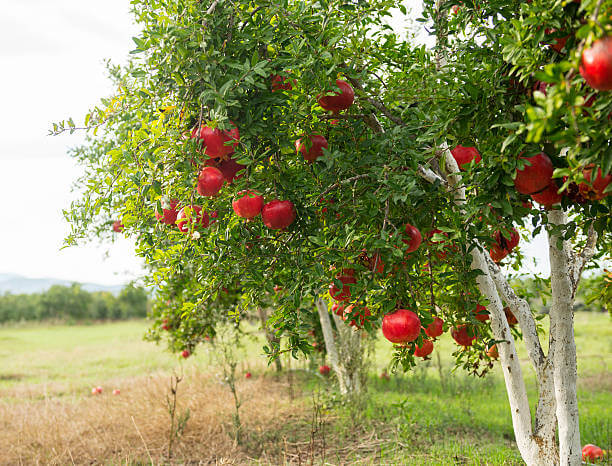
1- Water
Pomegranate can adapt itself to dehydration to some extent. Even after years of dehydration, there is still hope for the garden to develop for the second time. In spite of that, still quality and quantity of water is important. Usually 2ds/m of water is enough but if large amount of water and proper soil is available 5ds/m is also a good choice.
2- Soil
Pomegranate is also resistant to salty soil and is flexible toward different types of soils including sandy soil and clay. But the ideal soil for pomegranate has a tissue containing both clay and sand. The roots usually penetrate into a depth of 5-20 meters and develop easily.
Annual plow and manure consumption improve the soil characteristics and extension of root as far as increasing the quality of products and their amounts. Old pomegranate gardens should not be used for cultivation, since some terricolous pathogens like Nematodes could be found in the soil and prevent scions from growth. If there is compulsion, the garden should be cleared first and preferably left fallow or used for grain cultivation for several years. After this period, the garden would be ready for growing pomegranate trees.
3- Light
Pomegranate trees need a large amount of sunlight, that’s why small shrubs can’t fruit properly beside huge ones. Trees should be planted in light parts with suitable distance, so that the branches have enough space and reach light easily.
